How do I know if our ERG is successful? This is probably the number one question I hear from everyone from leadership, sponsors, or the employees responsible for launching the ERG. It’s a difficult question because the nature, purpose, and utility of ERGs aren’t always financial. Employee Resource Groups tend to focus on concepts that are difficult to quantify, especially for groups centered on disability. But just because it seems complex doesn’t mean it is – you just have to know what to look for. Regardless of your group type or goals, following these metrics, you’ll be able to measure and evaluate your ERGs to ensure success.
Metrics for Measuring ERG Success
Return on Investment (ROI). Probably the easiest, most approachable metric. To determine your ROI, first, decide your desired return. Are you looking for new hires from specific demographics? Are you looking to engage your current team? If your goal isn’t purely financial, you’re still going to want to keep an eye out for the money going out. At this point, you’ll run a simple cost-benefit analysis where you measure spending vs new hires, engagement, etc, and it’s up to the leaders and leadership to decide on the budgets.
Demographics and Engagement. Measuring demographics is simple and pretty straightforward. Most ERGs want to either increase hires, retention, or participation and engagement within the organization from particular groups. To measure demographic growth, assess your current numbers and set a reasonable goal for growth, and evaluate at least every three months.
To measure engagement, send out anonymous pulse surveys to see how people are responding to the ERGs. Also, the leaders of the ERGs should always observe participation and discuss those observations periodically. These evaluations allow you to make quick changes and adjustments.
With groups centered on disability, many times, the goal is accessibility, comfort, and inclusion. Making changes to accessibility are fairly easy, but these pulse surveys and observations will be key in determining success with disability ERGs because so much of the improvement is based on the intangible (comfort, inclusion, feeling seen and considered, etc), so engagement and discussion are vital.
Development and Retention. This includes hiring, recruitment, creating a pipeline for career development, and employee retention.
Hiring and recruitment are based on data and strategy.
Creating pipelines for career development is based on policy, framework, and ensuring equal opportunities.
Employee retention will rely heavily on pulse surveys and exit surveys when people leave.
We’re so accustomed to viewing success as pure numbers, but with ERGs, it’s much more, so to keep groups from falling through the cracks, the first step is this mind shift. Determining ERG success isn’t challenging – it’s just different. And once we realize this, we’re free to create our own ideas of accomplishment, growth, and success.
